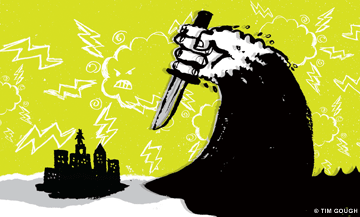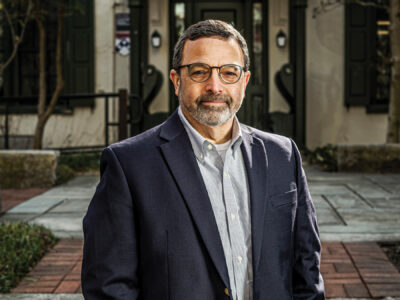
In 2005 Philadelphia experienced the worst increase in violent crime of any large city in America. After a period of relative calm, the city’s homicide rates are heading back to mid-1990s levels of more than 400 murders each year.
At a recent symposium titled “A City in Crisis? The Rise of Violence in Philadelphia,” a panel of experts in sociology, psychiatry, law, and criminology examined that disturbing trend and offered some insights and answers. The symposium was sponsored by the Department of Psychiatry, the School of Medicine, and the Psychoanalytic Center of Philadelphia.
Dr. Richard Gelles, dean of the School of Social Policy and Practice, suggested that one cause of the sobering rise in youth violence could be the welfare reforms of 1996—which he himself had a hand in writing. The city “may be at the front end of a wave,” he said, “because Philadelphia set a 24-month limit for welfare benefits, while the rest of the country set a 60-month limit.” The 1996 welfare reforms limited the time period for which welfare recipients could receive benefits and made welfare conditional on seeking work.
Unlike some welfare-reform critics, Gelles noted, he is not “a bleeding heart, left-of-center, typical dean of school of social work.” But he owned up to some responsibility for the bill’s shortcomings and omissions.
“We turned a blind eye to the fact that many of them were single parents,” he said of the welfare recipients. “It’s not a bad idea putting people to work—except that if you’re going to put moms to work, it’s really a good idea to have daycare and it’s really a good idea to have healthcare.
“We didn’t do that,” he said. “We created a situation where there’s nobody home.”
Without anyone to watch over them, children are being raised by the streets.
“The most important primary prevention for youth violence and youth murder is parenting education,” said Dr. Paul Jay Fink, a professor of psychiatry at Temple University and chairman of the youth-homicide committee of the Philadelphia Interdisciplinary Youth Fatality Review Team. Instead, children are growing up in a society “where households are in chaos.”
As a result, said Gelles: “I think we have entered into a payback period. We took moms and dads out of the picture for the sake of putting people at work in low-income jobs, and we are about to pay a very heavy price for that.”
While he acknowledged that his hypothesis is an “uncomfortable” one for him, Gelles made it clear that he does not believe in coincidences.
“Do the math,” he said. Take kids who were toddlers “in 1996, 1997, 1998, and then you’re not home for them,” he said. “At what age would they onset their violent behavior?” He paused. “2005, 2006, 2007, 2008.”
Dr. Lawrence Sherman, the Greenfield Professor of Human Relations and director of Penn’s Jerry Lee Center of Criminology, has also been looking for some causes. For the last two years, his center has been working with the Philadelphia Adult Probation and Parole Department on a pilot project analyzing the records of about half a million probationers, going back to 1969. Since more than 10,000 of those people on probation were later charged with committing murders, Sherman and his colleagues have been scouring the data with data-mining techniques to isolate the elusive factors that indicate an increased risk of a probationer committing murder.
Given that there are now approximately 100,000 people in a city of 1.5 million who are “either charged with pending offences or convicted of offences for which they are on a community-supervision sentence,” it’s not easy to find the proverbial needle in the haystack. But the stakes are high. One of the findings from the project so far is that the younger the probationer committed a serious offence, the “more likely they were to kill somebody before the age of 25,” said Sherman. “And that turns out to be a very small number of people.” Those are the people that society needs to focus on most urgently.
“There are things we can do,” said Gelles. “This is not a hopeless situation. We shouldn’t walk out of the room saying this is a bleak picture.”
—Yashas Vaidya C’09




